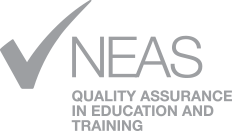A well-designed assessment doesn’t just evaluate learning — it shapes it. The quality of our test items directly influences how students study, what they value, and how confident they feel using English in real situations.
In this lesson, you’ll explore what makes assessment tasks valid, reliable, authentic, and appropriate for your learners’ level. We’ll look at how thoughtful design reduces cognitive overload, ensures fairness, and provides meaningful evidence of progress. You’ll also learn strategies for writing strong question stems, crafting plausible distractors, and ensuring each task measures exactly what it’s meant to.
Equally important is understanding backwash — the effect of testing on teaching and learning. Poorly designed tests can create negative backwash, where learners focus on memorisation or test tricks rather than communication. But with the right design, we can achieve positive backwash, where assessment motivates deeper engagement, reflection, and genuine language development.
By the end of this section, you’ll be able to:
- Apply validity, reliability, and authenticity in your assessment design.
- Write fair, level-appropriate test items that align with learning outcomes.
- Recognise and avoid practices that create negative backwash.
- Use assessment to encourage confidence, growth, and real-world language use.
Watch the video below and then take the lesson test.
